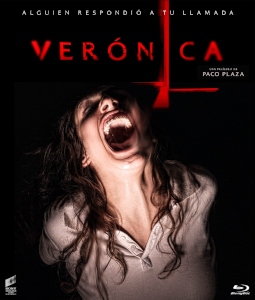A bizarrely specific subgenre of horror has gotten a lot of play in recent years: Ouija-board horror. The two films officially sanctioned by the Warner Brothers board game – the bland “Ouija” (2104) and its much better prequel, “Ouija: Origin of Evil” (2016) – are the most well-known.
Arthouse horror
But stories of terror being summoned via a supernatural-themed game date back to 1986’s “Witchboard,” and a quick IMDb search reveals at least 20 movies with “Ouija” in the title, several of which we have all noticed (but probably not actually watched) while lazily scrolling through our Netflix queue.
If you like this subgenre, it’s worth stopping your Netflix scroll on the Spanish film “Veronica,” which was released last year in Spain and also made a splash at the Toronto Film Festival. The setup is nothing new: Three girls, including the titular teen (Sandra Escacena, who looks kind of like Anne Hathaway), attempt to summon lost loved ones via a Ouija board.

“Veronica” (2017)
Director: Paco Plaza
Writers: Paco Plaza, Fernando Navarro
Stars: Sandra Escacena, Bruna González, Claudia Placer
But director-writer Paco Plaza and co-writer Fernando Navarro deliver what is probably the first arthouse Ouija film, set in 1991 Madrid. The summoning happens in a dank and junk-filled religious school basement, where a blind nun known as “Sister Death” hangs out, smokes and gives dire (and accurate) warnings.
And it occurs during an eclipse, which gives it extra power. This isn’t a slick Hollywood Ouija-summoning starring cute, scared teenagers; this is how it would go down in the gritty real world.
Fear of growing up
Veronica – with braces and hair that’s brushed less often than she’d like — raises her three younger siblings while her mom (Ana Torrent) works at the neighborhood diner to make ends meet. The teen unwinds by listening to contemporary (for the time) Spanish pop music on headphones, but “Veronica’s” score is inspired even more by synth music – something between “Halloween” and “The Terminator.”
The earthiness of the production design encourages a viewer to look for something substantial in the storytelling. The apartment is cramped and lived-in, and the demon-inflicted black stains on the kids’ mattresses look like genuinely bizarre discoveries. A viewer won’t get distracted by CGI in “Veronica,” although there is some of that.
Early on, “Veronica” feels more like a lower-class coming-of-age yarn than a horror film, especially when Veronica reluctantly plays the mom role.
There’s a hint of a “fear of growing up” metaphor, as Veronica’s first period coincides with horrific visions of a homely naked man stalking toward her. That’s something out of the “It Follows” playbook, and if you watch a lot of horror films, you’ll notice parallels to several others.
“Veronica” doesn’t redefine Ouija horror, but as a subtitled Spanish art film, it certainly approaches it from a different perspective.


